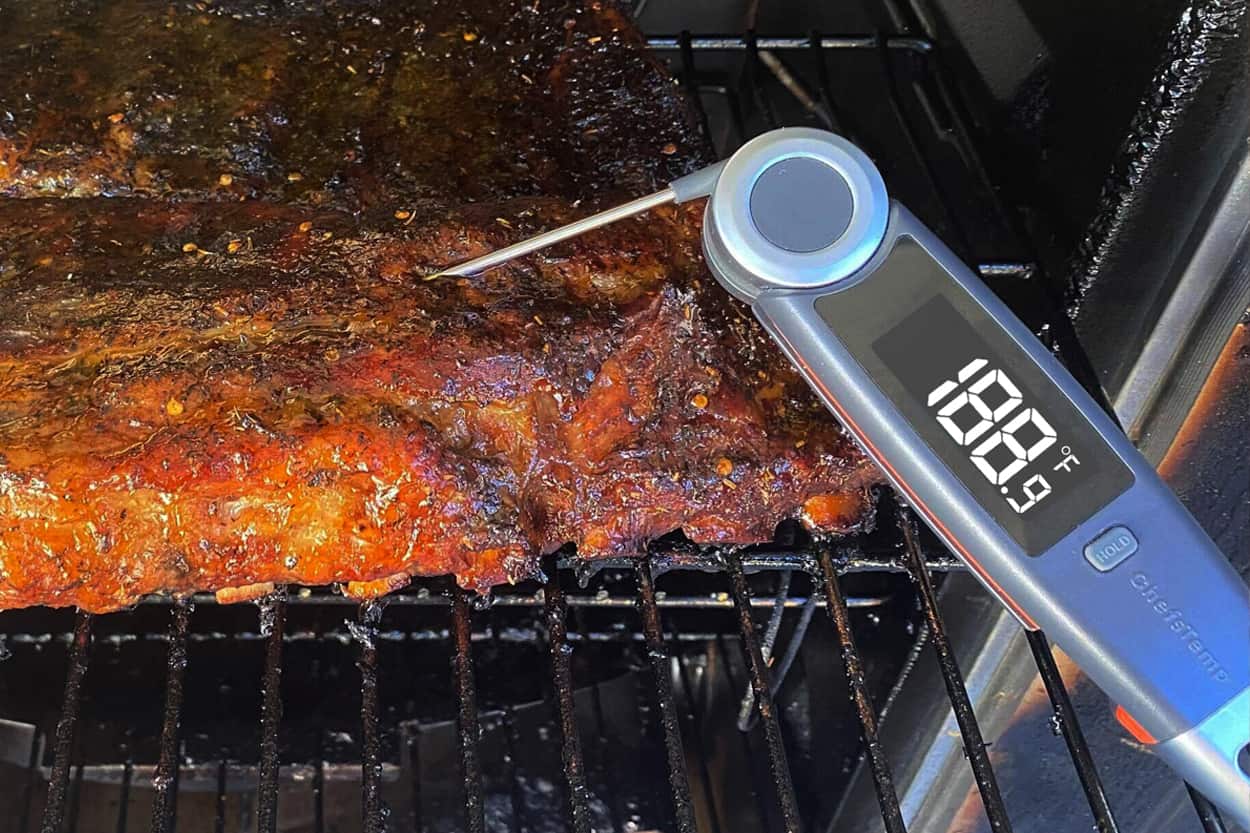
How to Make BBQ Pork Ribs?
A favorite among barbecue fans is BBQ Pork Ribs. These tasty ribs are wonderful if handled correctly and slow-grilled over lower heat and a longer cooking process. While everyone loves to have perfect ribs, a lot of times the product cooked at home does not quite meet the expectations desired. You may wonder why, and in this recipe, we are going to look at what you can do at home to make your slow-cooked ribs the ones everyone talks about.
First, let us look at the makeup of the pork rib as a whole and break it down into all the different rib cuts and what to look for when you are preparing the ribs to be cooked.
Ingredients:
- Back ribs, trimmed and silver skin removed.
- Spareribs, trimmed into the St. Louis Rib and Riblets, silver skin removed.
- Seasoning – McCormick Caribbean Jerk Seasoning
- Mango pepper jelly
- Pineapple chunks in pineapple juice – 116 ounces can
- Pineapple juice – 26 oz cans, one for the sauce and one to put into a spray bottle to spritz the ribs with as they cook.
- Habanero chiles – 2 whole chiles
- 1 cup sugar
Recipe:
Fabricate the sparerib into its separate parts, remove the silver skin from St. Louis cut and the Baby Back cut. Coat the ribs with marinade and set aside for one hour in the refrigerator. Prepare your grill, smoker, or pre-heat your oven.
At what temperature do I cook ribs?
These ribs cook at 250 degrees. Monitor your rib temperatures through the rib cooking process and ideally, the finished rib temperature should be between 175 and 200 degrees to ensure that the ribs are fully cooked and any connective tissue between the rib bones has had the opportunity to cook slowly and get tender. While your ribs are cooking you will prepare the Pineapple, Mango, Habanero sauce for the ribs.
Baby Back Rib – This cut is from the top of the rib section and comes from the spine, it is the meatiest cut of Pork Ribs and most tender. It can be identified by the curved bones and thick silver skin on the back. It is necessary to remove the silver skin to produce the tender rib that baby backs are famous for.
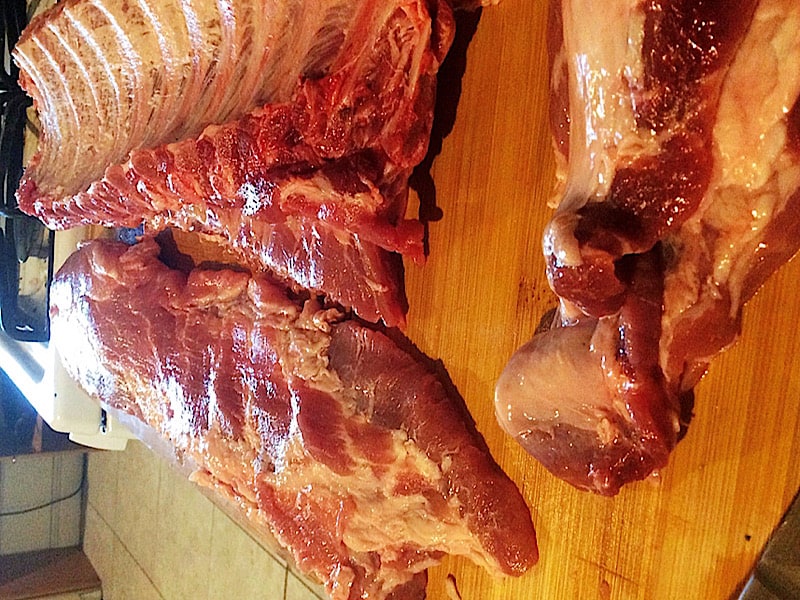
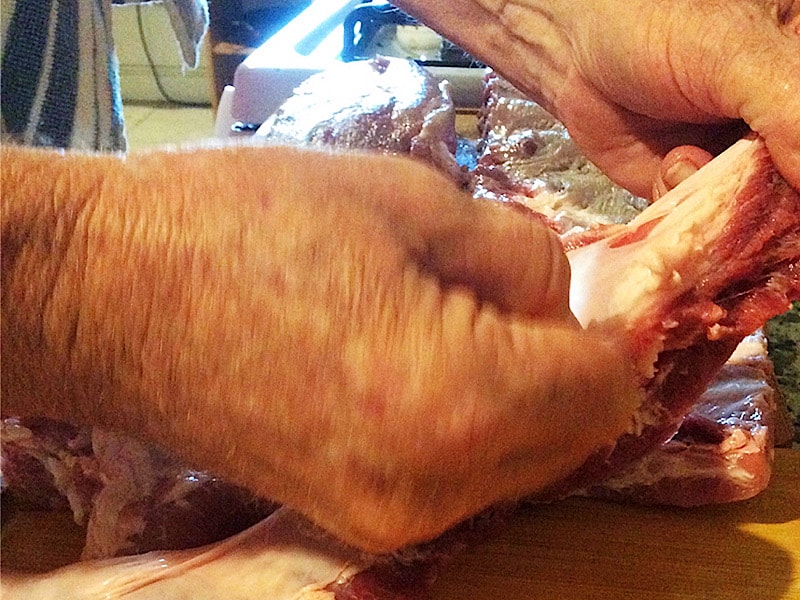
The silver skin is easy to remove with a simple technique. Using paper towels, lift the corner of the silver skin and in a steady motion, gripping the silver skin with the paper towels, pull it from the ribs. Once removed, the ribs can now take on and absorb the flavors from your rib marinade, seasonings, rubs, etc.
Spare Rib is the section of ribs between the Baby Back and the Pork Belly which is what bacon is produced from. As you can see in the picture, there is a lot to the Spare Rib, first is the main rib section, once the rib is trimmed it becomes the St. Louis Rib, attached is the flap, and the riblets. To produce the St. Louis Rib from the Spare Rib, you separate the riblets first, and then the flap, and once removed, you then remove the silver skin from the back and the fabricated rib cuts are ready to be seasoned for the grill, smoker, or oven. Keep in mind with all ribs, you want a lower heat and longer cooking process to produce tender juicy ribs.
Once all the ribs are trimmed and silver skin removed you will coat them with your rib seasoning and place in the refrigerator for one hour.
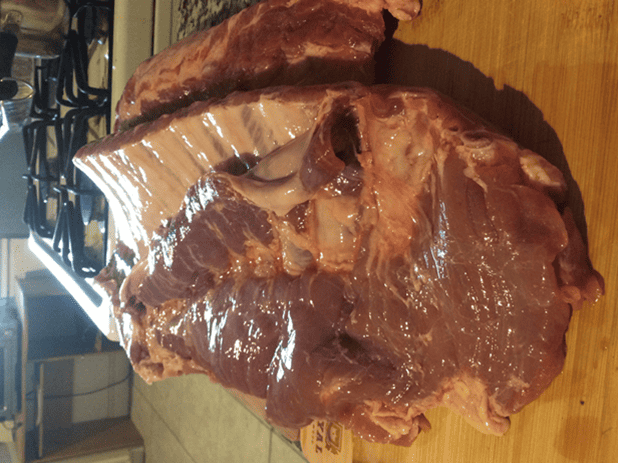
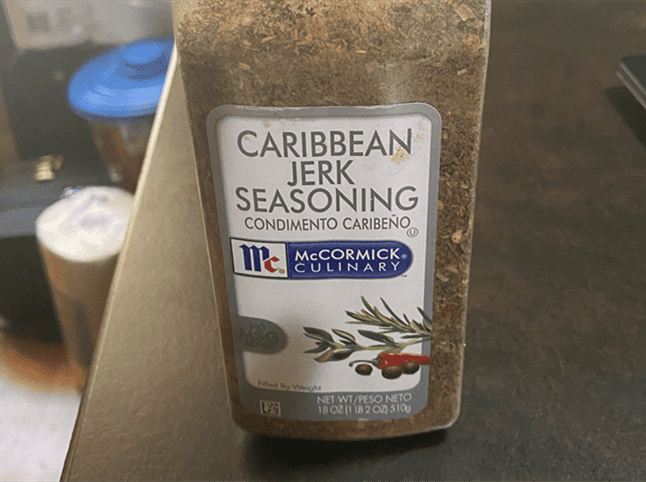
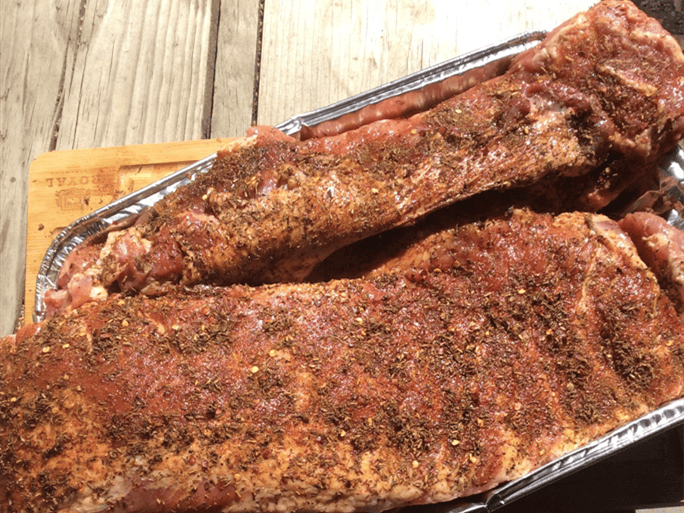
Once your heat source, oven, grill, or smoker is ready and up to the right temperature for the ribs, place them and start the rib cooking process. Using the oven or a smoker will allow you to slow cook the ribs. And to spritz the ribs once an hour during the 5-hour rib cooking process which helps to keep them moist and tender. If you are cooking them on your grill, you will need to spritz them more often, at the very least every thirty minutes but every 15 minutes is preferable. Also, when cooking them on the grill it will be necessary to flip the ribs, approximately every thirty minutes to ensure that the ribs cook evenly.
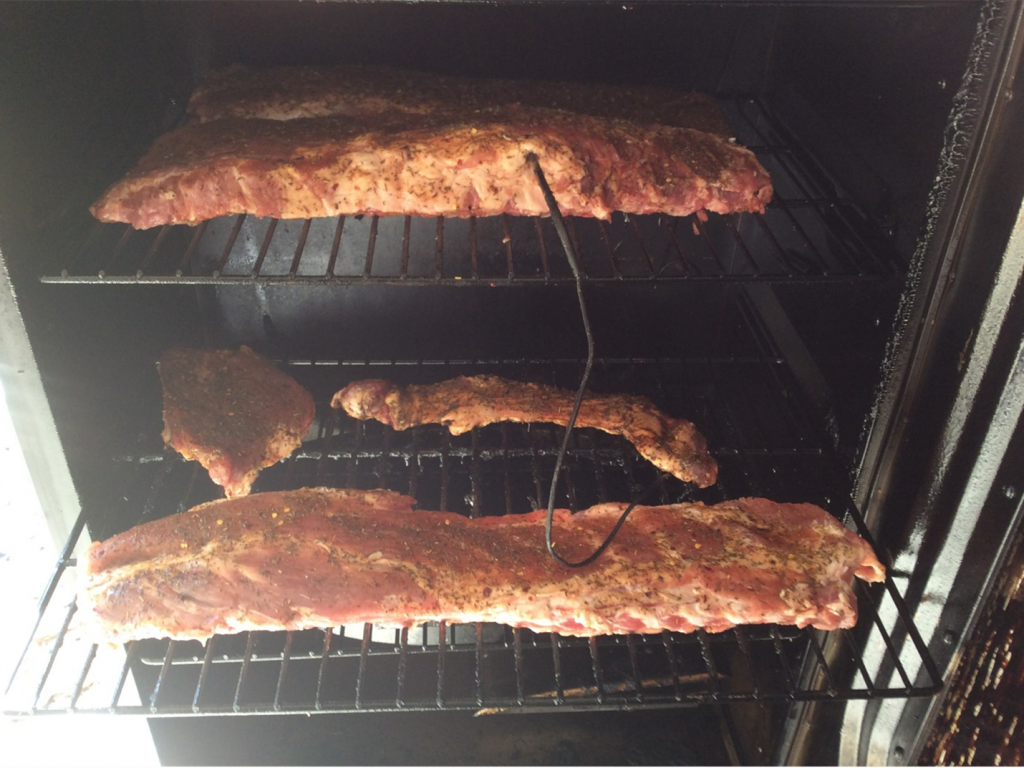
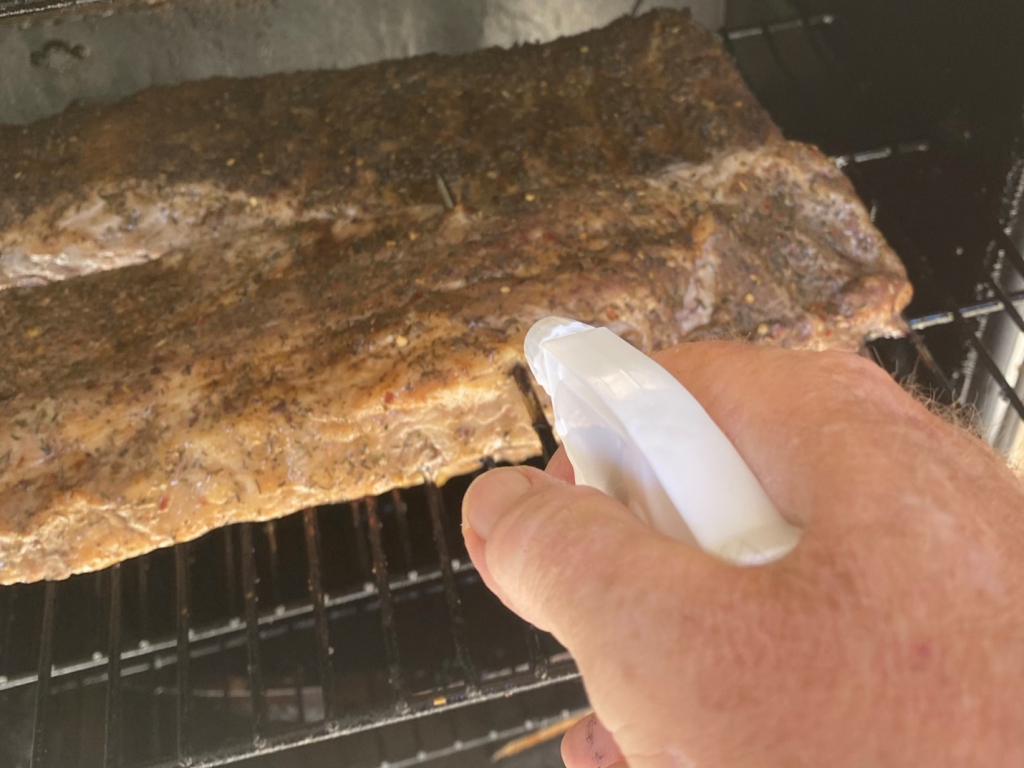
Pineapple, Mango, Habanero BBQ Sauce
To prepare the rib sauce follow these simple steps:
In a blender add the chunked pineapple with the juice first and blend it into a puree, then add the mango pepper jelly and blend again, and the habanero peppers and blend again, pour the contents of the blender into a saucepan and add the pineapple juice. Place on the stove over medium heat and bring to a boil, reduce to a simmer, cover the pan, and cook for approximately thirty minutes. Once cooked remove from the heat and strain the rib sauce. By straining the sauce, you will be removing any large pieces remaining and strain out the chili seeds that create the intense heat from the habanero peppers. Also remember that the heat is caused by capsicum, and it is most concentrated in the seeds and ribs inside the peppers.
Once you strain the rib sauce, return it to your pan, add the sugar and return it to the stove and bring it up to a boil and reduce to a simmer, then cover it and cook it for 30 minutes or until it reduces by one third.
Once your rib sauce is cooked, cool it and place it in a container of choice and place it in the refrigerator. Once your ribs have cooked for 4 hours, baste the ribs with the sauce, and let them cook for another hour, if you like more sauce on your ribs, baste them again 30 minutes from the end of the cooking time.
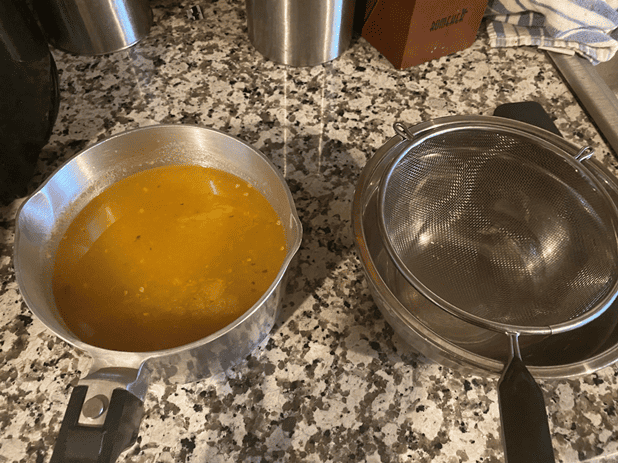
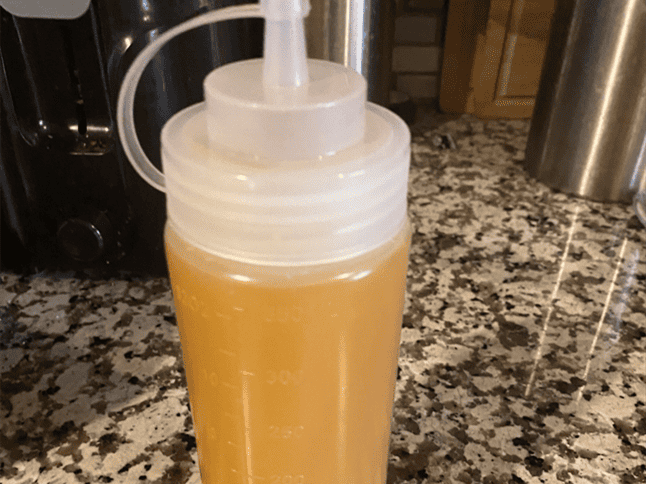
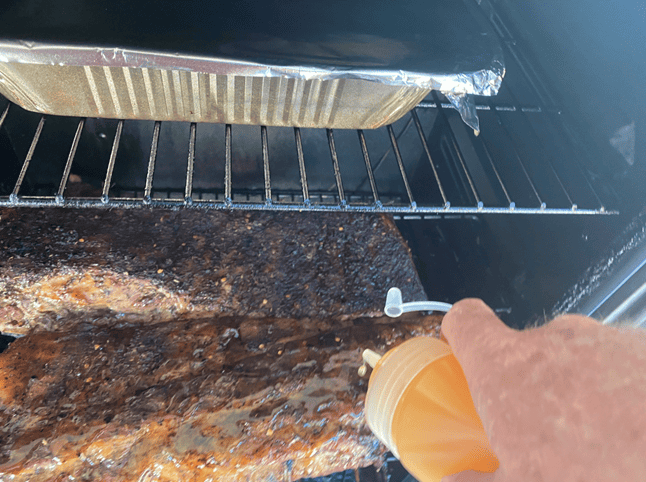
At one-hour intervals during the rib cooking process, you will want to use your meat thermometer and check the meat’s internal temperature, remember, your ideal rib cooking temperature is going to be between 175 and 200 degrees.
When your ribs reach the right temperature, you will want to remove them from the grill, smoker, or oven and allow the ribs to rest for 20 minutes before cutting them into portions for serving. Keep some extra sauce around for those who like more sauce and enjoy the best ribs you have ever eaten.
Finally, an inside look at how each type of rib differs from this you will be able to select the ribs you like best when purchasing the ribs for your cookout.
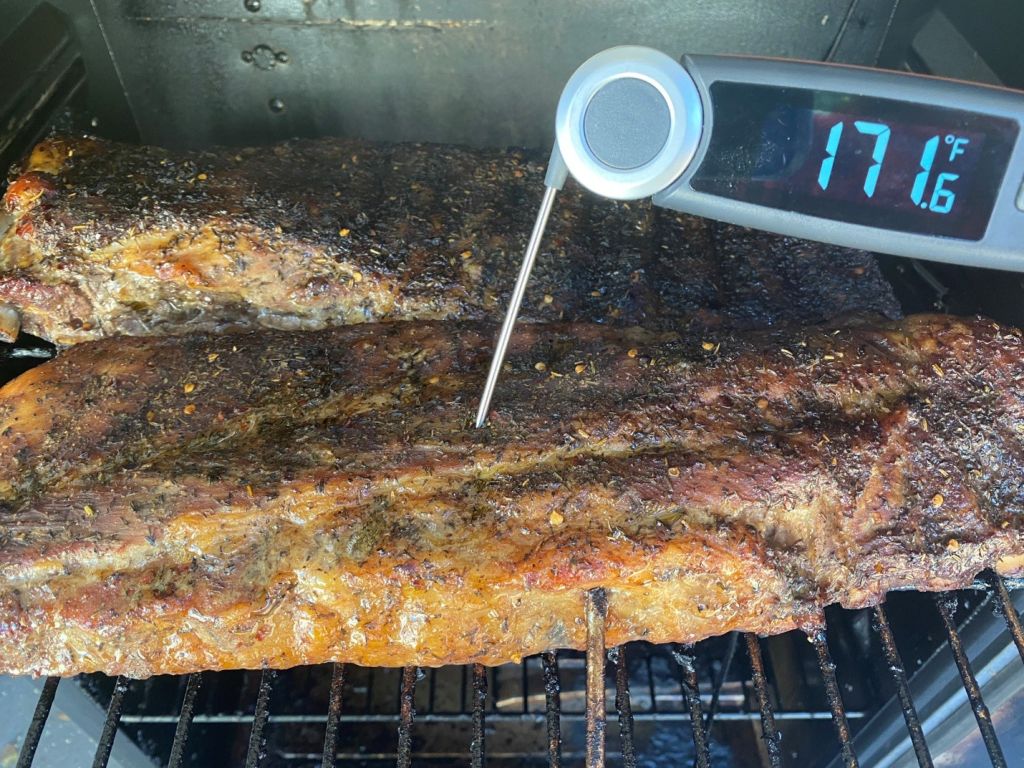
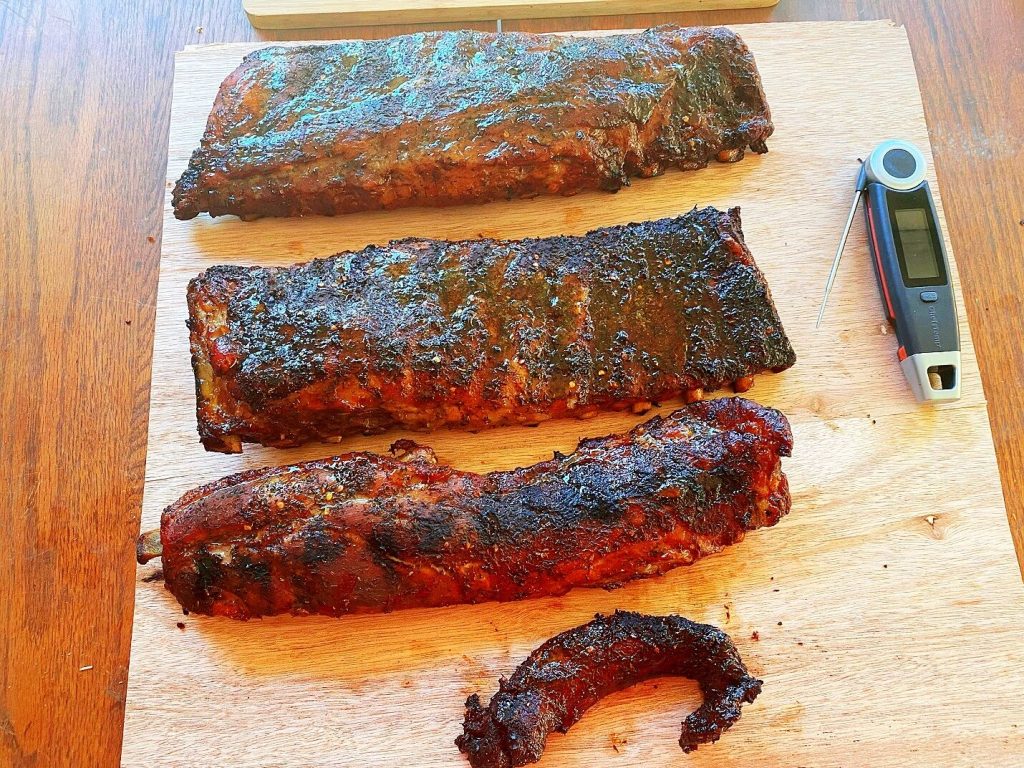
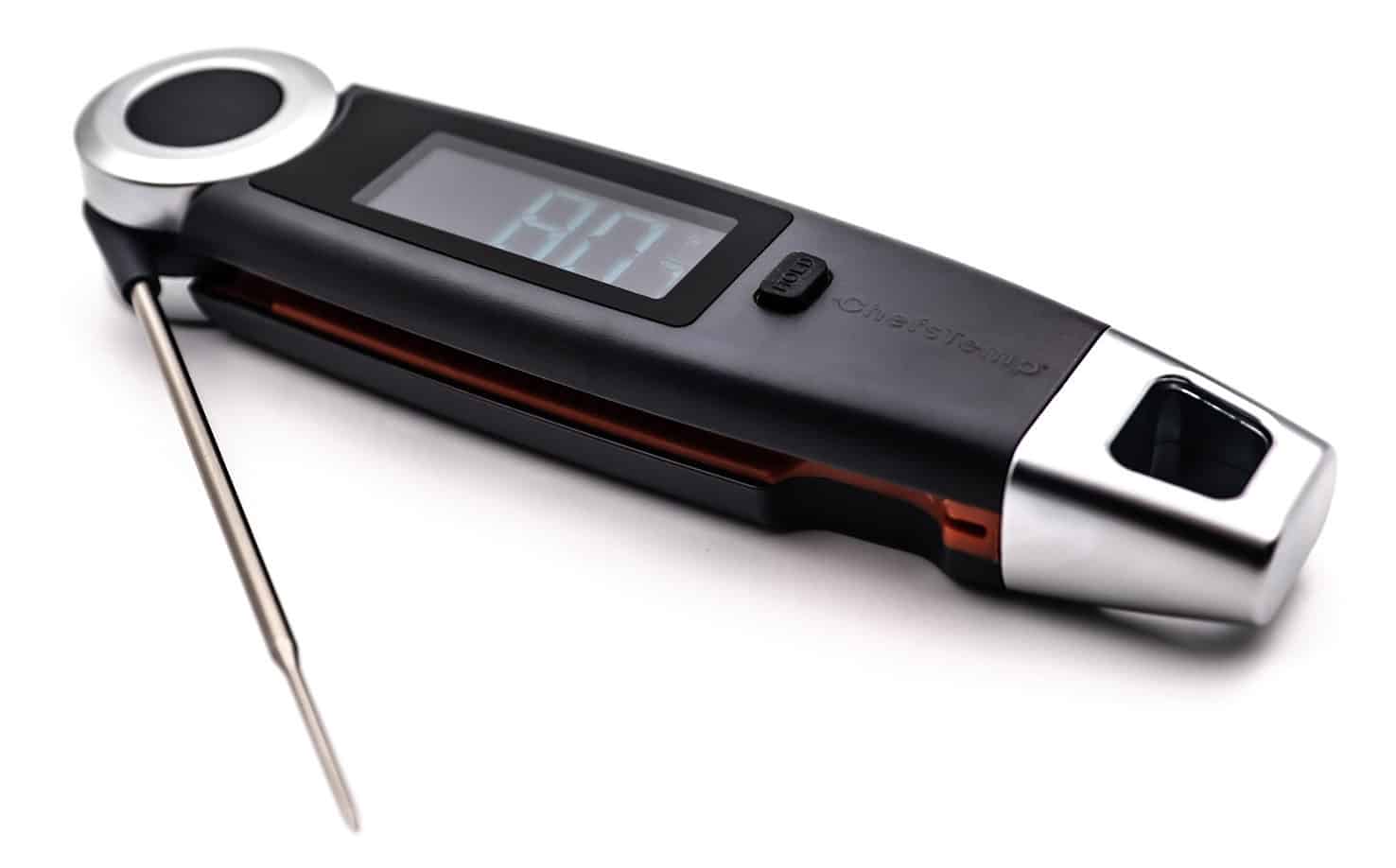
Finaltouch X10
The Finaltouch X10 thermometer from ChefsTemp gives an accurate reading not only for the inside of food but for surface temperatures as well. The diversity of the thermometer’s usage is second to none compared to other thermometers. By getting a reading within 1 second, the Finaltouch X10 from ChefsTemp is prepared to take on any task it is given.
One Comment
Comments are closed.
Discover Other ChefsTemp Products
Discover more recipes and learn kitchen tricks by joining our cooking family on Facebook.
You may also like:
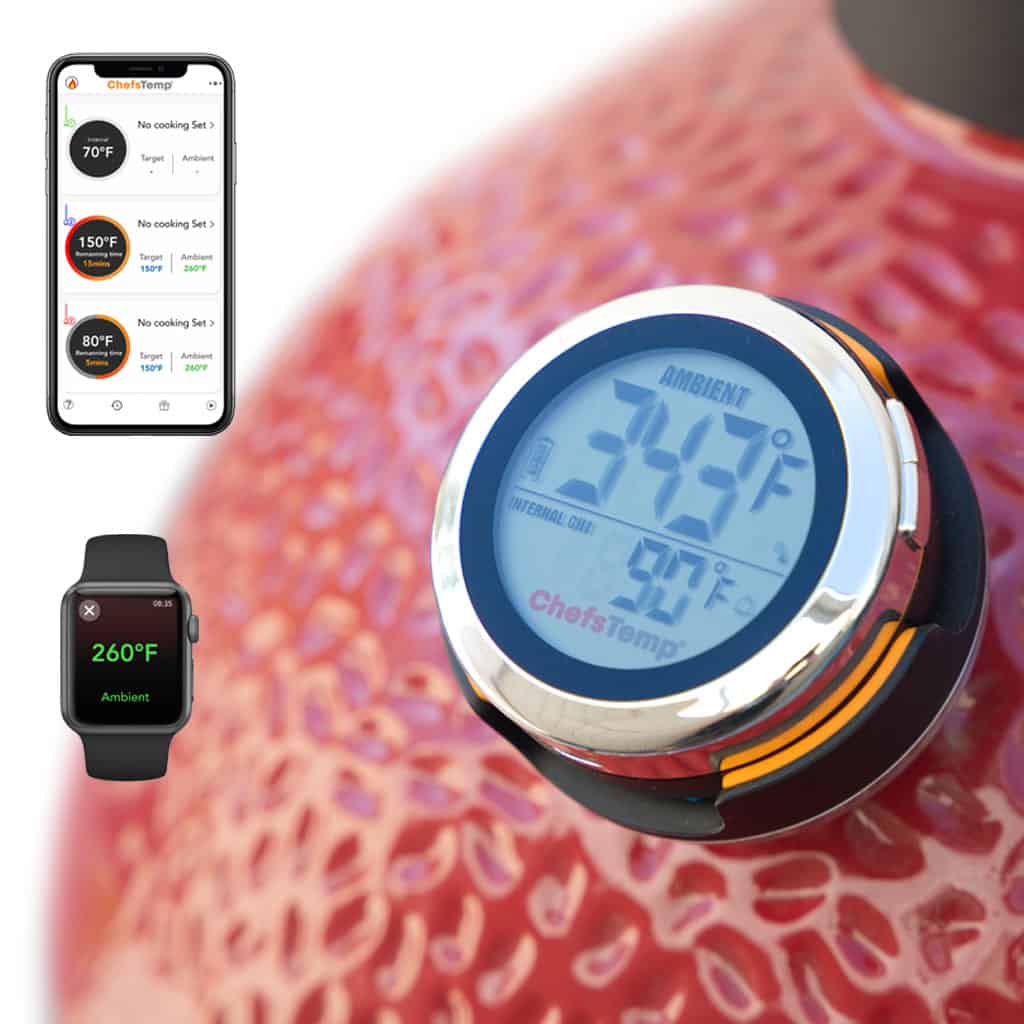
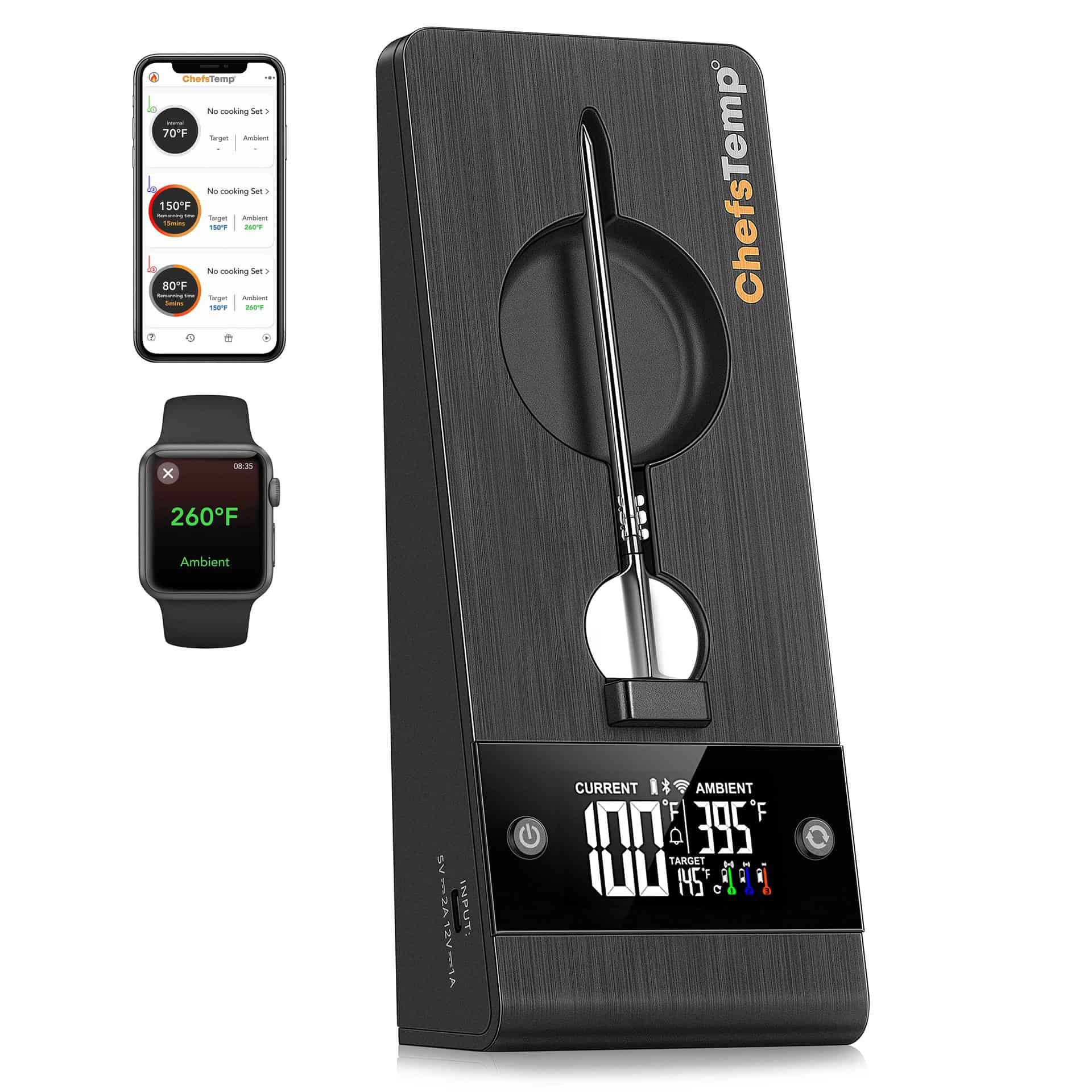
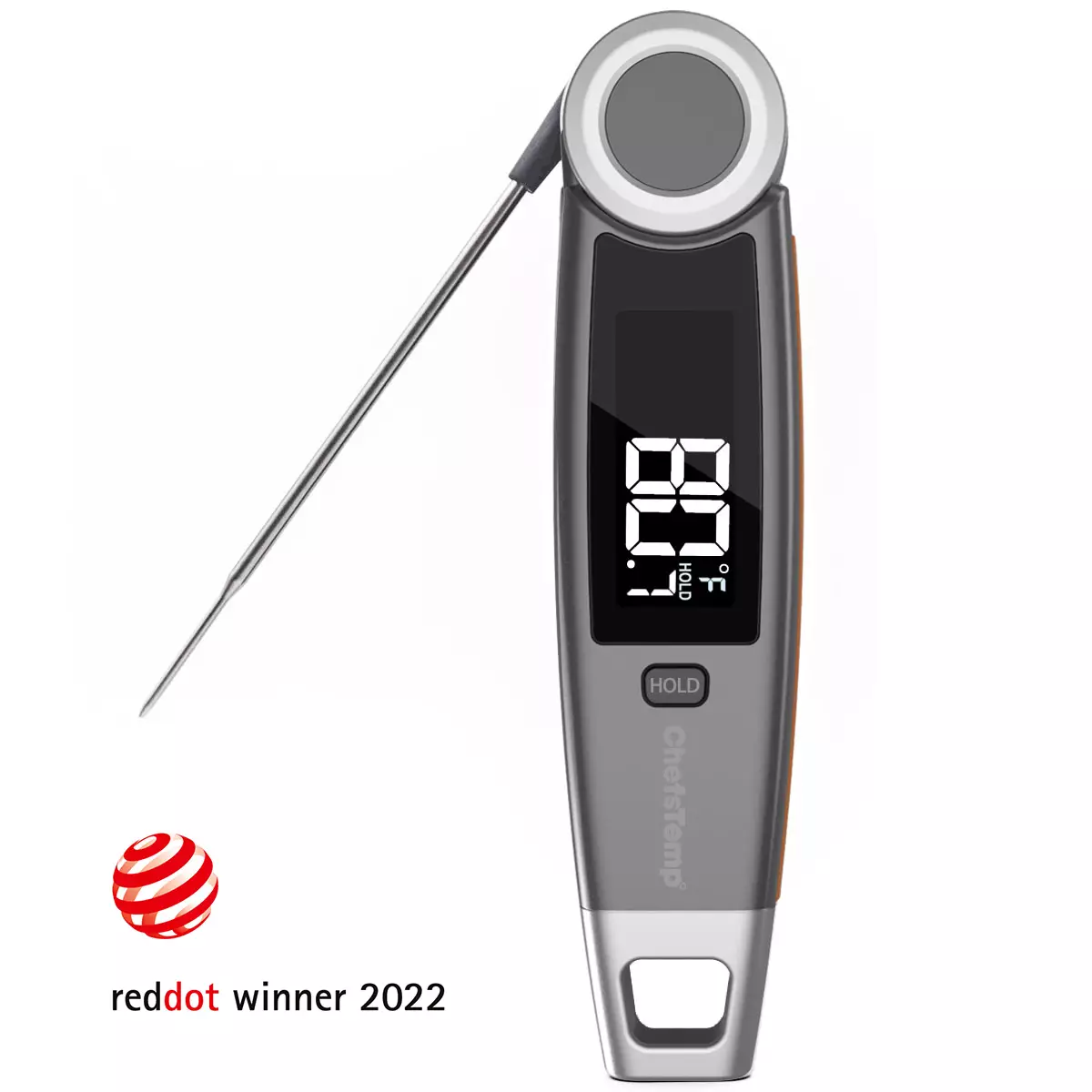
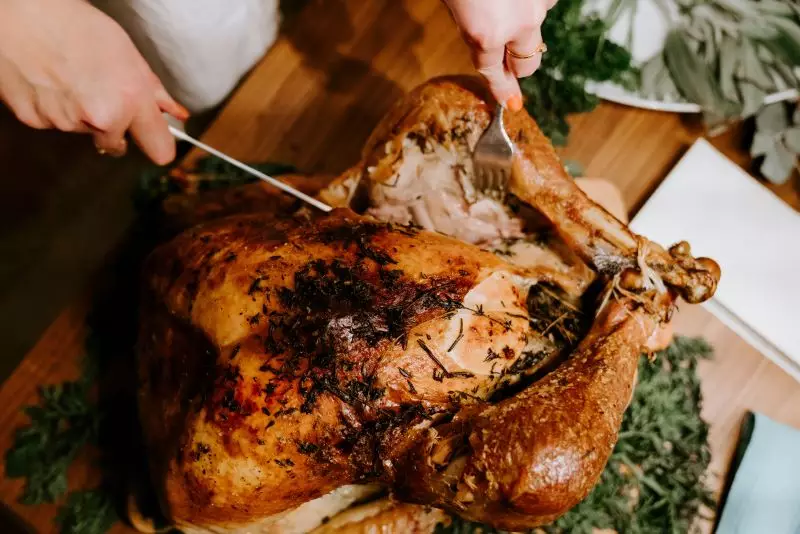
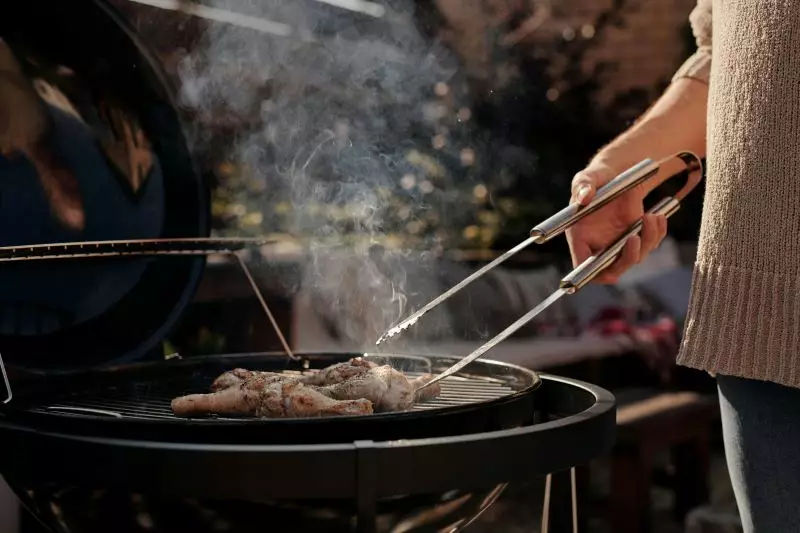
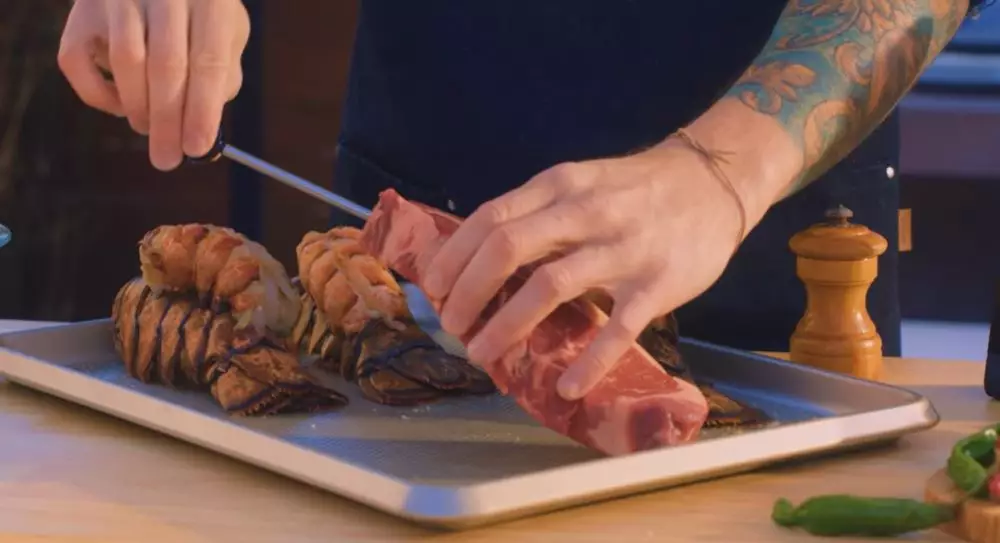
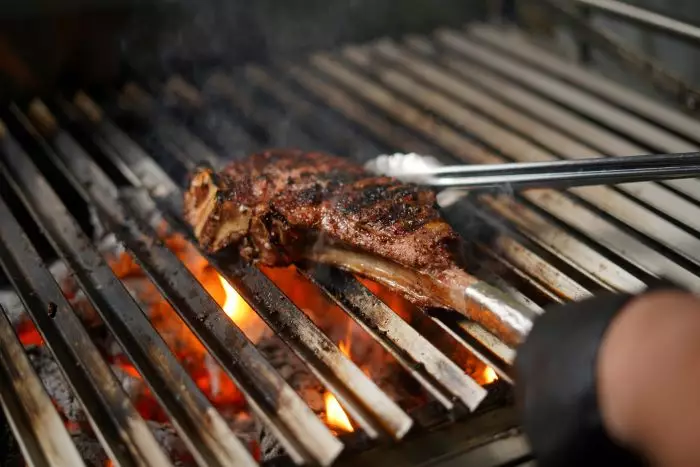
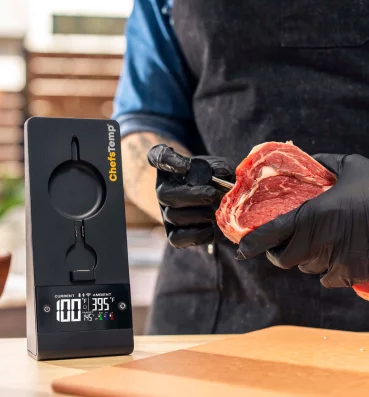
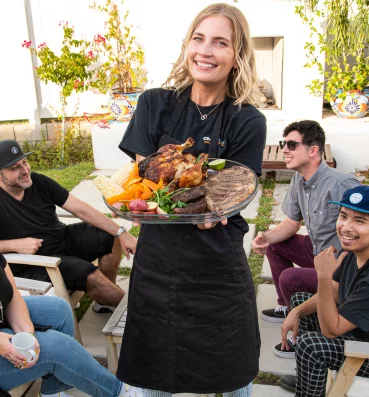
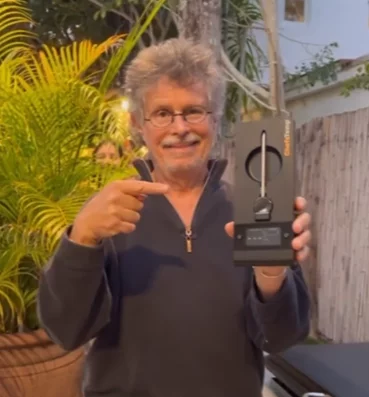
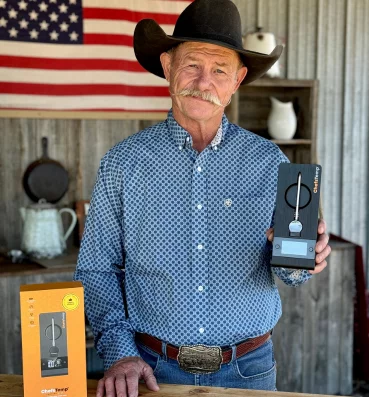
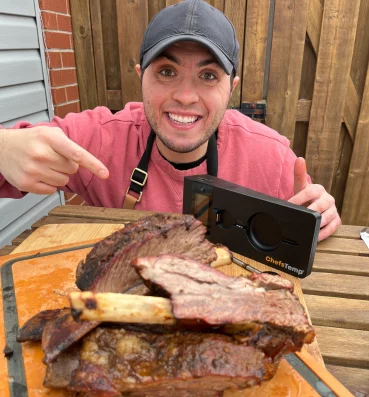
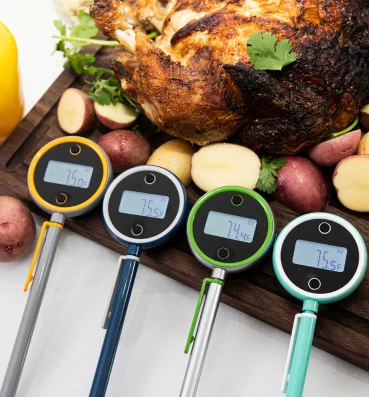
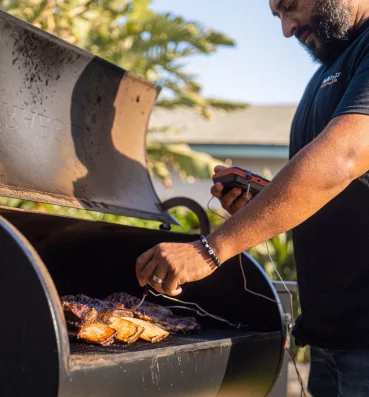
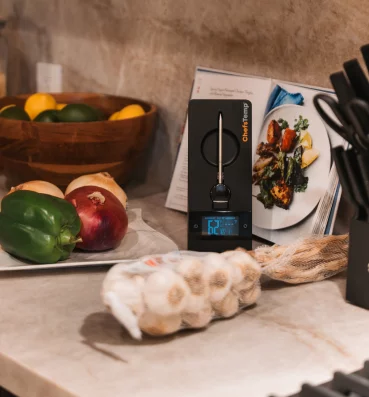

[…] eyeing for months, and even tackled the weed jungle you call a backyard. You are excited to host a barbecue party with friends and family. You are almost ready. Why almost? Well, you need to learn and perfect one […]